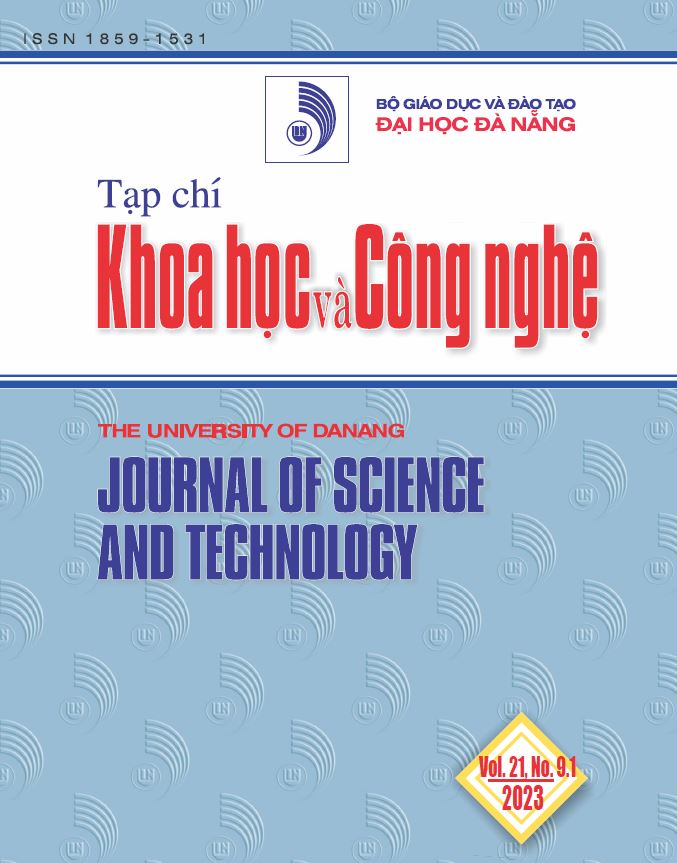Nghiên cứu thành phần hóa học và hoạt tính sinh học của tinh dầu hạt ngò gai Eryngium foetidum L.
 Tóm tắt: 878
Tóm tắt: 878
 |
|  PDF: 603
PDF: 603 
##plugins.themes.academic_pro.article.main##
Author
-
Nguyễn Thị Bích ThuyềnTrường Đại học Cần Thơ, Cần Thơ, Việt NamLê Hoàng NguyênTrường Đại học Cần Thơ, Cần Thơ, Việt NamTrần Thị Bích QuyênTrường Đại học Cần Thơ, Cần Thơ, Việt NamLâm Phúc ThôngTrường Đại học Cần Thơ, Cần Thơ, Việt NamTrần Nhật AnhTrường Đại học Cần Thơ, Cần Thơ, Việt Nam
Từ khóa:
Tóm tắt
Ngò gai còn gọi mùi tàu hay ngò tàu, có tên khoa học là Eryngium foetidum L. thuộc họ Hoa Tán. Trong nghiên cứu này, hạt ngò gai được thu mua ở Thành phố Cần Thơ được nghiên cứu về thành phần hóa học và hoạt tính sinh học. Kết quả xác định thành phần hóa học bằng GC-MS cho biết, thành phần hóa học trong tinh dầu hạt ngò gai gồm a-Pinene (83,04%), o-Cymene (5,66%), duraldehyde (5,64%), g-Terpinene (3,55%) và carotol (2,11%). Kết quả đánh giá hoạt tính kháng vi sinh vật cho thấy, tinh dầu hạt ngò gai kháng được 7 trên 7 chủng vi sinh vật thử nghiệm bao gồm Escherichia coli ATCC 25922, Pseudomonas aeruginosa ATCC 27853, Salmonella typhimurium ATCC 13311, Staphylococcus aureus ATCC 25923, Bacillus cereus ATCC 10876, Listeria innocua ATCC 33090 và nấm Candida albicans HS1. Kết quả thử hoạt tính kháng oxy hóa bằng phương pháp DPPH cho biết tinh dầu hạt ngò gai có khả năng kháng gốc tự do với giá trị IC50 = 170,90 µg.mL-1
Tài liệu tham khảo
-
[1] N. D. T. Thi, T. H. Anh, and L. N. Thach, “The essential oil composition of Eryngium foetidum L. in South Vietnam extracted by hydrodistillation under conventional heating and microwave irradiation”, Journal of Essential Oil Bearing Plants, vol. 11, no. 2, 154-161, 2008.
[2] H.A. Paul, C.E. Seaforth, T. Tikasingh, “Eryngium foetidum L.: A review”, Fitoterapia, vol. 82, pp. 302–308, 2011.
[3] Silalahi, “Essential oils and uses of Eryngium foetidum L.”, GSC Biological and Pharmaceutical Sciences, vol. 15, no. 03, pp. 289–294, 2021.
[4] R. Wanna and M. Wongsawas, “Toxicity and bioactivity of essential oil of Cilantro (Eryngium foetidum L.) against red flour beetle Tribolium castaneum (Herbst)”, Australian Journal of crop Science, 16, no. 02, pp. 259-265, 2022.
[5] Manjunatha, V. Kumar, T. Sannabommaji, D. V. Poornima, J. Rajashekar, and H. Gajula, “In vitro antioxidant and antidiabetic properties of Eryngium foetidum Linn”, Biomedicine, vol. 39, no. 4, pp. 532-529, 2019.
[6] N. T. B. Thuyen, H. Q. Phong, L. D. Duy, and T. T. N. Tram, “Study on bioactivities of Piper lolotDC. Essential oil”, Journal of Science and Technology, University of Science, Hue university, vol. 18, no. 2, pp. 123-132, 2021.
[7] Ministry of Science and Technology, Vietnamese Standard TCVN 8460:2010, Essential oils - sensory evaluation, 2010.
[8] Ministry of Science and Technology, Vietnamese standard TCVN 8444:2010, Essential oils - density determination, 2010.
[9] Ministry of Science and Technology, Vietnamese standard TCVN 8450:2010, Essential oils - determination of acid value, 2010.
[10] Ministry of Science and Technology, Vietnamese standard TCVN 8451:2010, Essential oils - determination of ester value, 2010.
[11] Ministry of Science and Technology, Vietnamese Standard TCVN 6126:2020, Determination of saponification index, 2020.
[12] T. B. Thuyen, C. L. N. Hanh, and T. T. N. Tram, “Investigating Optimal Parameters for Distilling Piper Lolot C.DC. Essential Oil and Studying Its Chemical Composition”. The University of Danang - Journal of Science and Technology, vol. 18, no. 11.1, pp. 7-10, 2020.
[13] Baj, A. Baryluk, and E. Sieniawska, “Application of mixture design for optimum antioxidant activity of mixtures of essential oils from Ocimum basilicum L., Origanum majorana L. and Rosmarinus officinalis L.”, Industrial crops and products, vol. 115, pp. 52-61, 2018.
[14] A. Dobre, V. Gagui, and N. Pertu, “Antimicrobial activity of essential oils against food-borne bacteria evaluated by two preliminary methods”, Romanian Biotechnological Letters. vol. 16, no. 6, pp. 119-125, 2011.
[15] N. G. Bao and N. H. H. Khai, “Research on the chemical composition and biological activity of spearmint essential oil", Graduate thesis, Can Tho University, 2020.
[16] K. Pandey et al., “Chapter 29 - Cancer on fire: role of inflammation in prevention and treatment”, Current Advances for Development of Functional Foods Modulating Inflammation and Oxidative Stress, ScienceDirect, pp. 605-626, 2022.
[17] Saldanha et al., Chapter 17 - Health Effects of Various Dietary Agents and Phytochemicals (Therapy of Acute Pancreatitis), Therapeutic, Probiotic, and Unconventional Foods, ScienceDirect, pp. 303-314, 2018.
[18] M. Mahboubi and Kazempour, “Chemical composition and antimicrobial activity of Satureja hortensis and Trachyspermum copticum essential oil”, Iranian Journal of Microbiology, vol. 3, no. 4, pp. 194-200, 2011.
[19] N. Yen, B. N. A. Thu, and N. M. Kha, “Chemical composition and antioxydant activity of rosemary essential oils (Rosmarinus officinalis L.)”. Journal of Scientific research and Economic development, Tay Do University, vol. 06, pp. 190-201, 2019.
[20] T. Hang, N. T. T. Tam, and M. H. Phuong, “DPPH free radical scavenging and reducing power properties of Boerhavia diffusa in Can Gio, Ho Chi Minh City”. Ho Chi Minh city university of education journal of science. vol. 12, no. 90, pp. 112-122, 2016.
[21] T. X. Trang, L. H. B. Ngọc, and V. T. T. Anh, “Studies on antibacterial and antioxidant activities of methanolic extract from Streptocaulon juventas Merr”, Can Tho University journal of science, vol. 40, pp. 1-6, 2015.
[22] D. T. X. Trang, N. T. M. Phuong, V. T. N. Diem, and Q. T. Hue, “Studies on hypoglycemic and antioxidant activities of ethnolic extracts from Morinda citrifolia L. in diabetic mice”, Can Tho University journal of science. vol. 23b, pp. 115-124, 2012.



